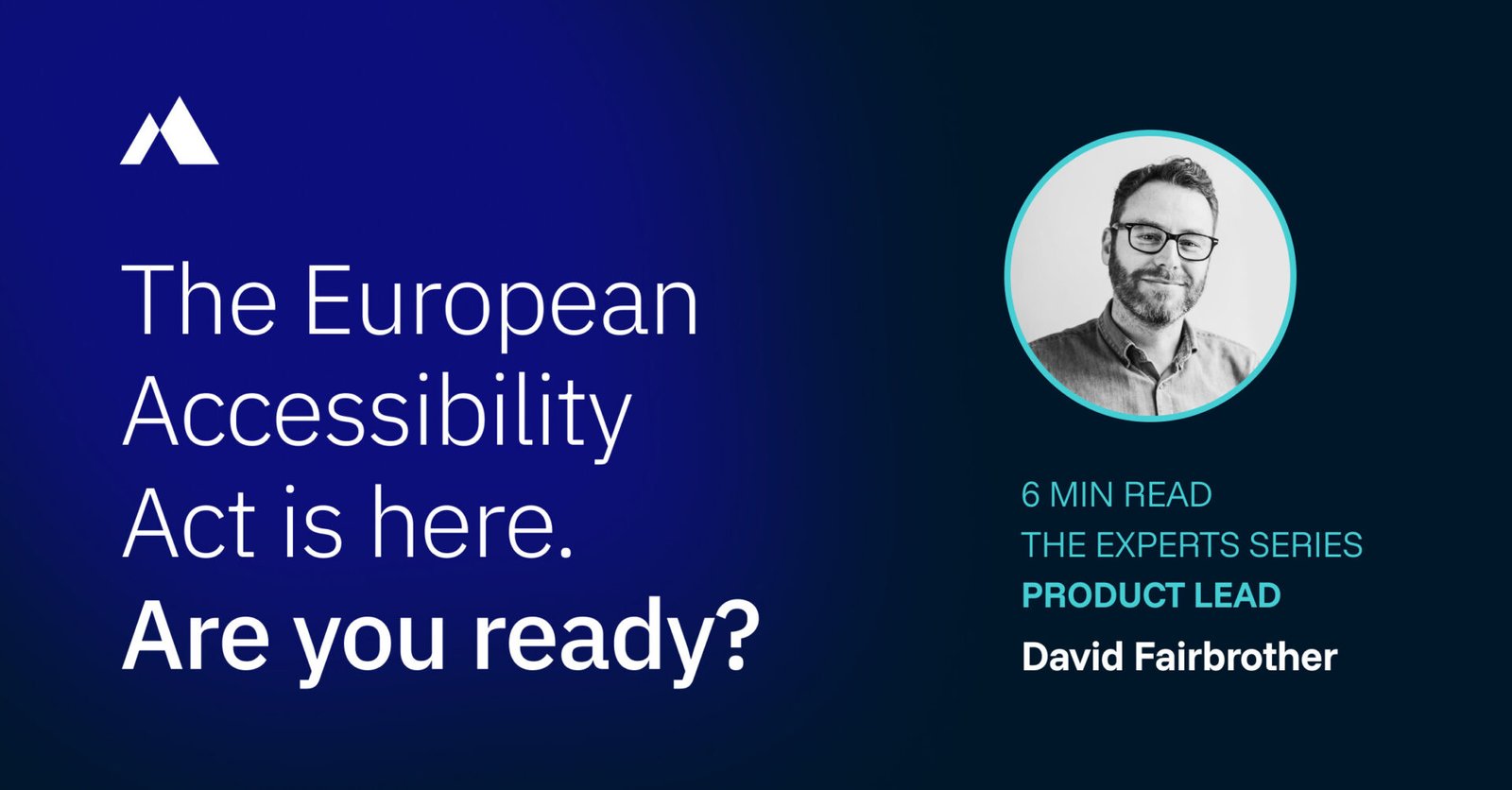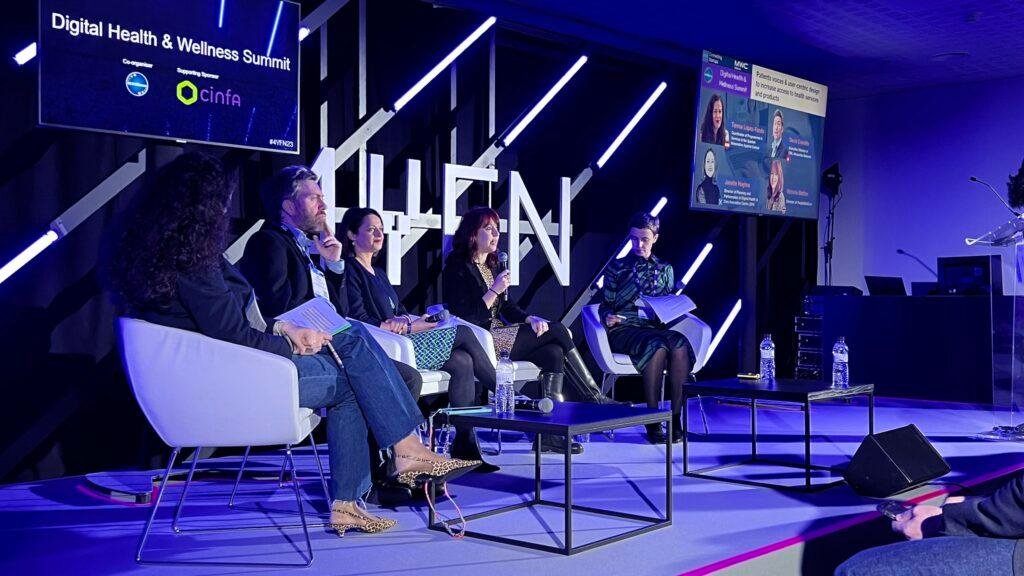From the 28th June 2025, the European Accessibility Act (EAA) required new digital products and services to meet accessibility standards across the EU. If some of your audience falls within the EU, whether or not you operate from the EU, this applies to you. Whether you work in public services, healthcare, transport, e-commerce, digital platforms or beyond.
But while the legislation brings a legal deadline, the real opportunity here goes much deeper than compliance.
At Big Motive, we believe accessibility is about creating services that work for everyone. That’s not just good design, it’s good business. And better ethics.
Accessibility: More Than Compliance
More than 135 million people in Europe live with a disability. That’s one in five people. And it doesn’t stop there.
When you include people with temporary impairments (a broken arm, recovering from surgery), situational limitations (trying to use your phone in bright sunlight or with one hand) or age-related changes, the number of people affected by poor accessibility rises even further.
That’s millions of people excluded daily from services they rely on. Inaccessible design isn’t just frustrating, it’s often a barrier to independence, wellbeing or financial security.
Creating accessible services means recognising this diversity and designing for it. Not as an afterthought, but from the very start.
“At Big Motive, we don’t treat accessibility as a checklist. We treat it as a creative constraint that drives better thinking, better design and better outcomes. Because when you build for edge cases, everyone benefits.”
David Fairbrother, Product Design Lead
Why This Matters Now
The EAA is a significant moment. From 2025, a wide range of organisations will need to comply with recognised standards like WCAG 2.2 and EN 301 549. This includes:
- Websites and apps
- Transport and ticketing services
- Banking, retail, and e-commerce
- Telecoms and digital communications
- Smart devices and self-service terminals
Non-compliance could mean legal action, reputational risk or the need for costly rework. But the real cost? That’s the trust lost when people find your service hard – or impossible – to use.
What Happens After 28th June 2025?
After 28th June 2025, organisations affected by the EAA must ensure new digital products and services meet the mandatory accessibility requirements. Digital products and services existing before 28th June 2025 have five years to meet the requirements – until 28th June 2030. Specifically, this means:
- Audit your digital estate: Identify all websites, apps and digital tools that fall under the EAA scope.
- Meet technical standards: Align your digital content with WCAG 2.2 Level AA and relevant EU harmonised standards such as EN 301 549.
- Provide accessibility statements: Publish clear, up-to-date accessibility statements on your websites and apps, outlining compliance status and contact points for accessibility issues.
- Ensure ongoing monitoring: Set up processes for regular testing and updates to maintain compliance as content and technology evolve.
- Train your teams: Build internal awareness and capability around accessibility best practices to embed inclusive design in future projects.
- Support alternative access: Provide accessible alternatives or support channels where full digital accessibility is not possible.
Big Motive specialises in guiding organisations through these exact steps. Making sure you’re ready on time and with confidence, not scrambling at the last minute.
Big Motive’s Unique Accessibility-First Design Approach
It might surprise you to learn that 94.8% of the web is inaccessible. This isn’t just a statistic, it’s a wake-up call about how widespread inaccessible design conventions have become.
At Big Motive, we prepare client brands for more flexible, future-ready and genuinely accessible digital experiences. Our approach focuses on the scalable and repeatable parts of usable interfaces. Those design elements that can be systematised without sacrificing creativity or user empathy.
We help clients break free from the ubiquitous but sometimes problematic digital design patterns that regularly trip up users with disabilities. By guiding them towards inclusive, accessible design principles baked into their brand and interface systems, we make accessibility an enabler, not an afterthought.
Accessibility Is Good Business
Let’s be clear: inclusive design isn’t just the right thing to do. It’s a smart investment. Organisations that prioritise accessibility benefit from:
- Stronger brand trust – Inclusive brands are perceived as more responsible and more innovative.
- Wider reach and customer growth – An accessible product can reach millions more people.
- Improved SEO and discoverability – Accessible content is easier to find and index.
- Better performance and usability – Clean, structured, accessible interfaces tend to be faster and more user-friendly.
- Reduced support costs – Fewer usability barriers means fewer frustrated users seeking help.
We’ve seen it ourselves. In our work with Bioliberty, revolutionising stroke rehabilitation, we ran co-design sessions with users who rely on assistive tech. Their insights reshaped our approach to aligning with clinician and patient needs, making the service simpler for everyone. Not just those with accessibility needs.
Don’t Bolt It On. Bake It In.
Many organisations treat accessibility as a retrofit. Unfortunately this is a recipe for frustration and inefficiency.
At Big Motive, we bake it in. From discovery to delivery.
We run inclusive research, test prototypes with real users and work shoulder-to-shoulder with your teams to build lasting capability. Accessibility isn’t a “phase” in our process, it’s threaded through every decision we make.
And because we’ve worked extensively in government, health and private sectors, we understand the challenges you face – and how to navigate them with care.
The Big Opportunity
The European Accessibility Act isn’t just a legal obligation. It’s a cultural moment. One that asks every organisation: who are you designing for?
At Big Motive, we think the answer should be: everyone. Good design leaves no one behind.
And when you design for everyone, you don’t just meet the standard, you exceed expectations. You future-proof your services. You grow your audience. And you lead.
So whether you need a quick accessibility audit, help building internal design standards or a full-scale service reimagined with inclusivity at its core – we’re here.
Let’s turn compliance into creativity. Let’s build something better.
Ready to get started? Let’s talk.

